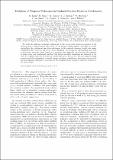Files in this item
Evolution of temporal coherence in confined exciton-polariton condensates
Item metadata
| dc.contributor.author | Klaas, M. | |
| dc.contributor.author | Flayac, H. | |
| dc.contributor.author | Amthor, M. | |
| dc.contributor.author | Savenko, I. G. | |
| dc.contributor.author | Brodbeck, S. | |
| dc.contributor.author | Ala-Nissila, T. | |
| dc.contributor.author | Klembt, S. | |
| dc.contributor.author | Schneider, C. | |
| dc.contributor.author | Höfling, Sven | |
| dc.date.accessioned | 2017-11-27T13:30:10Z | |
| dc.date.available | 2017-11-27T13:30:10Z | |
| dc.date.issued | 2018-01-05 | |
| dc.identifier | 251541623 | |
| dc.identifier | ea80a9bc-e683-4224-9b0f-d9f688a2d09d | |
| dc.identifier | 85040114500 | |
| dc.identifier | 000419325000016 | |
| dc.identifier.citation | Klaas , M , Flayac , H , Amthor , M , Savenko , I G , Brodbeck , S , Ala-Nissila , T , Klembt , S , Schneider , C & Höfling , S 2018 , ' Evolution of temporal coherence in confined exciton-polariton condensates ' , Physical Review Letters , vol. 120 , no. 1 , 017401 . https://doi.org/10.1103/PhysRevLett.120.017401 | en |
| dc.identifier.issn | 0031-9007 | |
| dc.identifier.uri | https://hdl.handle.net/10023/12178 | |
| dc.description | The authors would like to thank the State of Bavaria for financial support. T.A-N. has been supported in part by the Academy of Finland through its CoE grants 251748 and 284621. I.G.S. has been supported by IBS-R024-D1, the Australian Research Council's Discovery Projects funding scheme (project DE160100167), and the Dynasty Foundation. | en |
| dc.description.abstract | We study the influence of spatial confinement on the second-order temporal coherence of the emission from a semiconductor microcavity in the strong coupling regime. Provided by etched micropillars, the confinement has a favorable impact on the temporal coherence of solid state quasi-condensates that evolve in our device above threshold. By fitting the experimental data with a microscopic quantum theory based on a quantum jump approach, we scrutinize the influence of pump power and confinement and find that phonon-mediated transitions are enhanced in the case of a confined structure, in which the modes split into a discrete set. By increasing the pump power beyond the condensation threshold, temporal coherence significantly improves in devices with increased spatial confinement, as revealed in the transition from thermal to coherent statistics of the emitted light. | |
| dc.format.extent | 4739151 | |
| dc.language.iso | eng | |
| dc.relation.ispartof | Physical Review Letters | en |
| dc.subject | QC Physics | en |
| dc.subject | T Technology | en |
| dc.subject | NDAS | en |
| dc.subject.lcc | QC | en |
| dc.subject.lcc | T | en |
| dc.title | Evolution of temporal coherence in confined exciton-polariton condensates | en |
| dc.type | Journal article | en |
| dc.contributor.institution | University of St Andrews. School of Physics and Astronomy | en |
| dc.contributor.institution | University of St Andrews. Condensed Matter Physics | en |
| dc.identifier.doi | https://doi.org/10.1103/PhysRevLett.120.017401 | |
| dc.description.status | Peer reviewed | en |
This item appears in the following Collection(s)
Items in the St Andrews Research Repository are protected by copyright, with all rights reserved, unless otherwise indicated.

